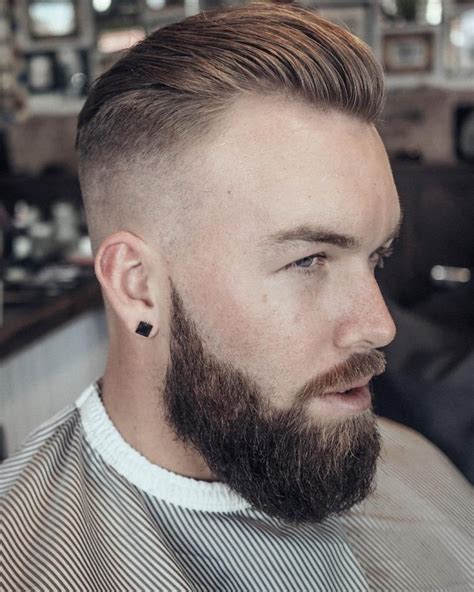Introduction
Slicked-back hairstyles have been a staple in men’s fashion for centuries, exuding confidence, sophistication, and a touch of rebelliousness. From classic Hollywood stars to contemporary heartthrobs, this iconic hairstyle continues to captivate.

Historical Evolution
The slicked-back style has its roots in the ancient Greeks, who slicked their hair back with olive oil to protect it from the sun and wind. In the 1920s, gangsters and movie stars popularized the “greaser” style, which featured slicked-back hair with a high shine.
Reasons for Popularity
- Versatility: Suits various face shapes and hair textures, creating a polished and refined look.
- Timeless Appeal: Has been a staple in men’s fashion for centuries, transcending trends.
- Easy Maintenance: Requires minimal styling effort, making it a low-maintenance option.
- Enhances Facial Features: Frames the face, highlighting the eyes, cheekbones, and jawline.
- Creates an Air of Confidence: Projects a polished and assertive image.
Types of Slicked-Back Styles
Classic Slicked-Back: A timeless style where the hair is combed straight back from the forehead to the crown, creating a smooth and sleek appearance.
Modern Slicked-Back: A more relaxed version, often incorporating a slight lift at the roots or a messy texture for a more casual vibe.
Asymmetrical Slicked-Back: Features hair combed back on one side, creating an edgy and unconventional look.
Pompadour Slicked-Back: Combines a voluminous pompadour with a slicked-back finish, creating a statement-making style.
Suitable Hair Types
Slicked-back hairstyles are suitable for various hair types:
Thick Hair: Holds the style well, creating a voluminous and sleek look.
Thin Hair: Can create the illusion of fuller hair, as the slicked-back style reduces hair movement and hides thinning areas.
Curly Hair: Requires more styling products and effort to achieve a slicked-back finish, but can be achieved with the right techniques.
Pain Points and Motivations
Pain Points:
- Hair becoming greasy or oily throughout the day, resulting in a messy appearance.
- Difficulty in achieving and maintaining a smooth and sleek finish.
- Concerns about hair damage from excessive styling products.
Motivations:
- Desire for a polished and professional look for work or special occasions.
- Aspiration to emulate iconic male hairstyles from history or popular culture.
- Confidence boost from feeling well-groomed and stylish.
Tips and Tricks
Preparation:
- Wash hair thoroughly to remove any dirt or residue.
- Towel-dry hair to remove excess moisture.
- Apply a pre-styling product to enhance hold and reduce frizz.
Styling:
- Comb hair straight back from the forehead to the crown.
- Use a styling product specifically designed for slicked-back hairstyles, such as pomade or gel.
- Work the product through the hair evenly, using a comb or your fingers.
- Smooth hair back with a brush or comb for a sleek finish.
Maintenance:
- Use dry shampoo or hair powder to absorb excess oil and maintain a matte texture.
- Touch up the style throughout the day by combing and reapplying styling product as needed.
- Wash hair regularly to prevent product buildup and hair damage.
Product Guide
Pomades: Offer strong hold and high shine, suitable for thick or unruly hair.
Gels: Provide a firmer hold with a more natural finish, ideal for thin or delicate hair.
Creams: Offer a medium hold and a flexible finish, suitable for all hair types.
Conclusion
Slicked-back hairstyles for men remain a timeless and versatile style, offering a range of options to suit various face shapes, hair types, and personal preferences. With the right products and techniques, men can achieve a polished and confident look that exudes sophistication and style.
